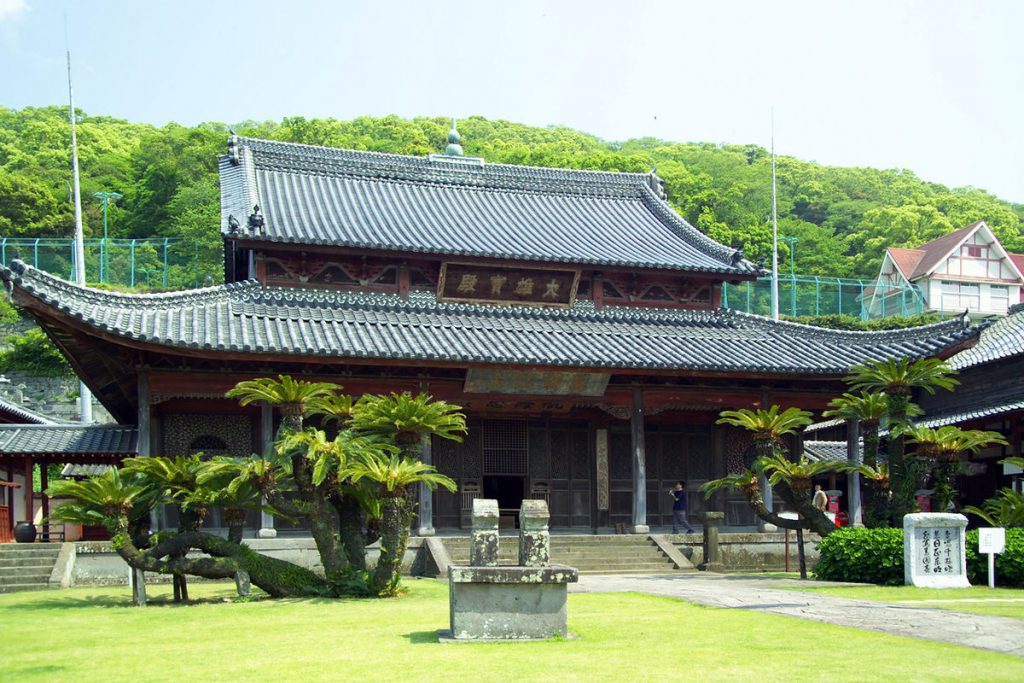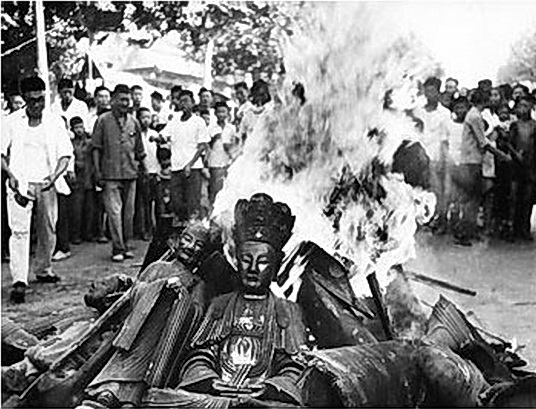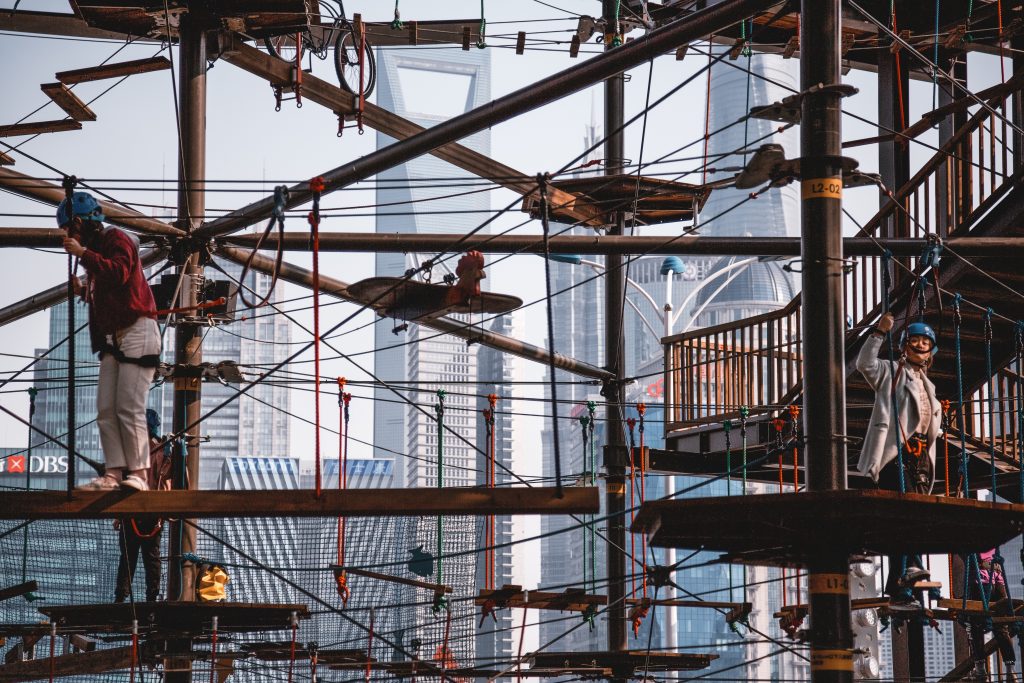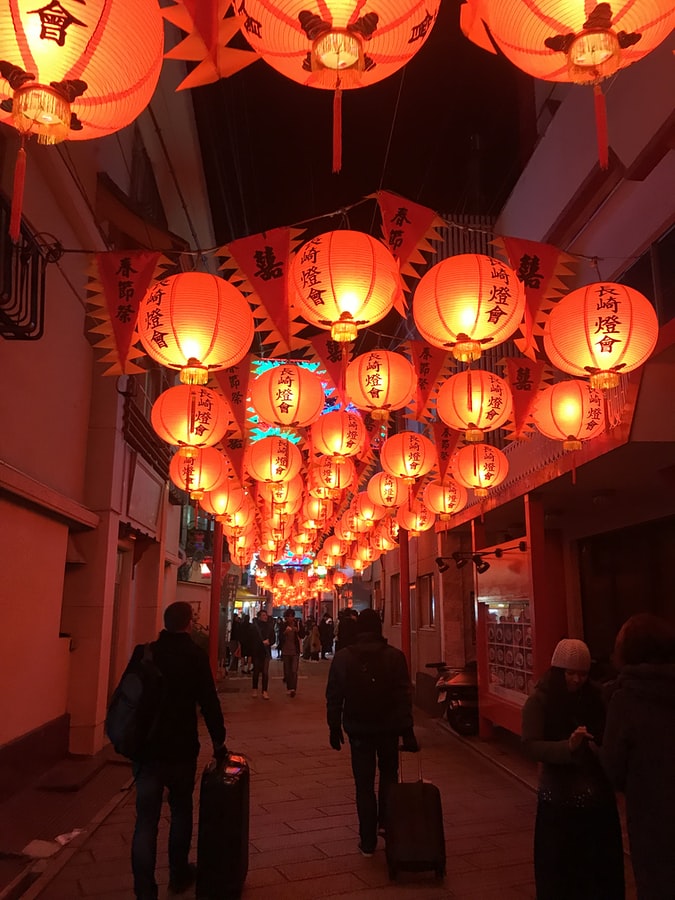No products in the cart.
Blog
Why Is Nagasaki’s Chinatown So Popular Among Chinese Tourists?
- Nagasaki has one of the world’s most authentic Chinatowns
- The Cultural Revolution lead to the destruction of many buildings in mainland China.
- China’s fast-moving growth has led to many old buildings being treated as collateral
Nagasaki is a city that is famed for a number of reasons. Most notably in 1945 Nagasaki suffered a horrendous attack at the hands of one of only two nuclear weapons used on human beings. Those more familiar with Japanese history may also associate Nagasaki with its role as the sole port in Japan open to Western traders for over 200 years. This was due to the policy of Sakoku (鎖国), literal meaning: closed country, which created a period of isolationism during the Tokugawa Shogunate. In this period, Dutch and Portuguese enclaves formed, and all western trade was done through Nagasaki.
However, I was unaware until recently that Nagasaki is a popular tourist destination among Chinese tourists, due largely to its Chinatown. I was informed by a Nagasaki resident that the city’s Chinatown is often full of Chinese travellers. Why you may ask, as I did, would Chinese tourists visit Japan just to see Chinese buildings? The answer is simple; many cities in China have little to no historic buildings. This has meant that for many Chinese tourists, Nagasaki’s Chinese areas feel more Chinese than modern China itself.
The surprising information about Nagasaki’s Chinatown leads to two questions. What happened to China’s historic buildings? And, why does Nagasaki have such a terrific array of Chinese architecture?
In terms of why Nagasaki has so many Chinese buildings the answer is simple. Nagasaki’s position as the only ‘open’ port in Japan meant that traders came to settle in Nagasaki, not just Europeans but Chinese traders too. Chinese merchants were allowed slightly more freedom than their European counterparts but were only able to live in a Chinese designated area of Nagasaki.
Large numbers of Fujian Chinese moved to the city, at one point making up 15% of Nagasaki’s population. Many settled and their ancestors remain in Nagasaki to this day. Over the years, Nagasaki’s Chinatown has become full of Chinese buildings. Most notably there a series of traditional Chinese temples. The area has also become, rather unsurprisingly, the centre of Nagasaki’s Chinese New Year Celebration.

Nagasaki Kofukuji Temple Nagasaki
The more pressing question is why people would have to leave China to witness their nation’s history. The reason is that two periods in China’s recent history have had a massive impact on their stock of cultural sites. These periods being The Cultural Revolution, and the huge economic boom China has seen in the last three to four decades.
When thinking of Chinese buildings being destroyed one’s mind may instantly flick to The Cultural Revolution. The Cultural Revolution was a violent period from 1966 to 1976 during which time Chairman Mao promoted the destruction of the traditionally Chinese way of things. The Four Olds were Old Customs, Old Culture, Old Habits, and Old Ideas. Loosely formed groups of “Red Guards” across China ransacked and destroyed thousands of historic sites intent on erasing The Four Olds; With the idea that China’s history was holding it back from progress.
The most notable example was the ransacking and burning of a 2,000-year-old temple to Confucius in Shandong. In general, Buddhist temples and relics all over China were prime targets. In Beijing alone, as many as 4,922 of the 6,843 sites of “historical interest” were destroyed during the cultural revolution. In fact, unless Zhou Enlai (China’s Premier at the time) had stationed the People Liberation Army at particularly significant locations, such as the Forbidden City, many more historical sites would have been destroyed. Even before The Cultural Revolution, it is important to note that Western imperialism, Civil War, and Japanese invasions also impacted the physical stock of Chinese culture.

Burning of culturally important items
It is, however, as a result of recent events through which China lost most of its historical architecture. China’s massive economic development since the 1990s has led to the loss of many historic buildings and areas. He Shuzhong, of the Beijing Cultural Heritage Protection Centre, stated that “The last 20 years have been the worst time for cultural heritage site protection with the rapid development … It is even worse than in the Cultural Revolution … in the [redevelopment] of old towns many old buildings have been demolished. Beijing used to have 25 protection areas and I believe only half of them are still well protected now”. Between 1990 and 2009 40% of Beijing’s downtown was destroyed, an area of 4.43 million square meters. In this destruction, a large selection of Qing Dynasty mansions in the historic area surrounding Beijing’s Drum and Bell Tower were lost.
This destruction is mirrored across China. The old town in Dinghai, Zhejiang, has been razed to the ground over the last few years. In Tianjin, a 600-year-old neighbourhood was pulled down and replaced with office blocks. In Shanghai many Lilong, among other historic architecture, have been destroyed to make way for infrastructure projects including highways. Most notably the house of I. M. Pei, perhaps China’s most renowned architect of the modern era, was destroyed despite its protected status. Though Shanghai has certainly fared better than many cities, having saved a higher than average number of pre-communist housing and buildings, particularly in the French Concession.
Although most notable in cities the destruction of Chinese historical architecture is perhaps most substantial in rural areas. Between 2000 and 2010 1.1 million Chinese villages disappeared, a rate of 300 a day. A massive push for urbanisation has led not only to the physical destruction but to the destruction of a way of life. China’s history is deeply embedded in farming, and village communities. Many villages have unique cuisine, music, and even dialects, as people move faster into cities much of this culture is lost forever.
Buddhist, Taoist, Muslim, and Christian temples across China have also faced destruction with the CCP’s promotion of a more secular life. Notably, a 2000-year-old temple in the Qinling mountain range was destroyed, having been declared an ‘illegal’ structure. Overall tens of thousands of religious sites have been destroyed. Between 1982 and 2009 in total, at least 30,000 sites of historical importance were destroyed, making up around 13% of the 225,000 documented in 1982. The scale of historical destruction is unprecedented.
The reason for the destruction is not however just a disregard for history, but a powerful and unflinching pursuit of economic and cultural progress. China’s economy is growing dramatically and to keep up with this economic growth, cities attempt to modernise at rapid rates. This growth and urge to modernise has created a building boom in China unlike any in history. In the three years preceding 2014 China used more concrete than The USA did in the whole of the 20th century. A notable example of this growth can be seen in cities like Ordos, with some local residents claiming no buildings are older than ten or even five years. The Ministry of Housing & Urban-Rural Development has stated that every pre-1999 structure should be destroyed within the next 20 years to provide new housing. The position of local and national government appears to be that the destruction of China’s rich architectural history is a necessary step to improve housing and office stock in larger cities.

Construction work in Shanghai
huge growth has created a situation in which many Chinese people feel that to see the true history of their great culture and nation they must travel abroad. This isn’t to say there are no old buildings in China because certainly there are, but more that for many people in China living in urban areas their lives are dominated by new buildings and infrastructure rather than historic culture. So, for many Chinese tourists in Nagasaki, the chance to see Chinese history is too good to miss.

